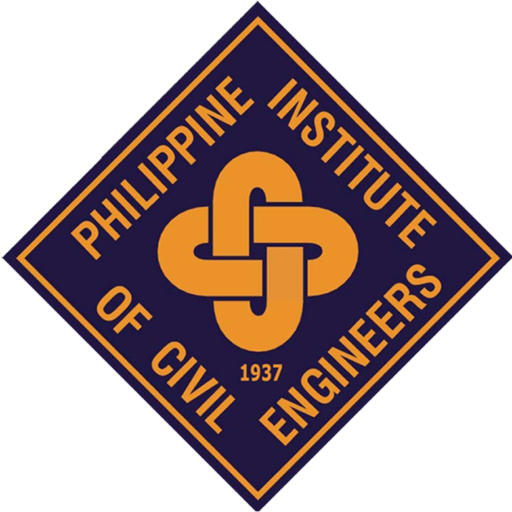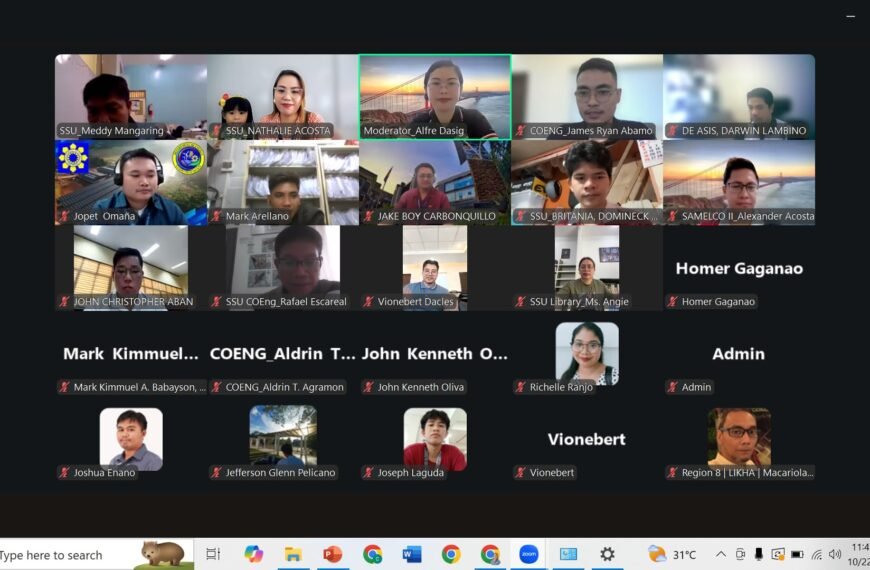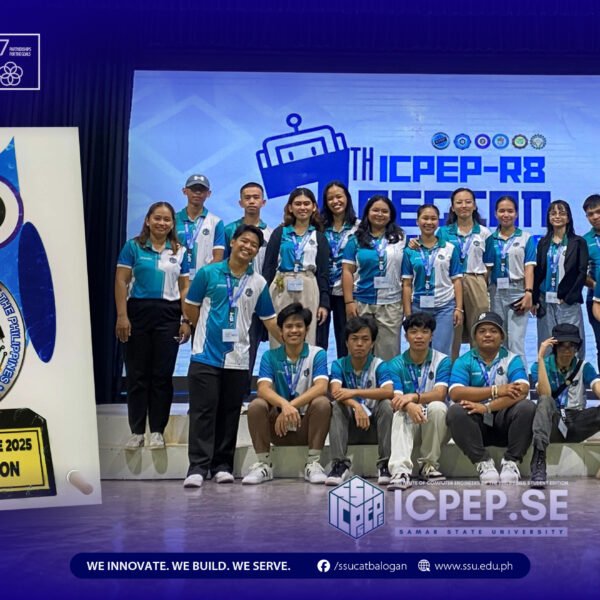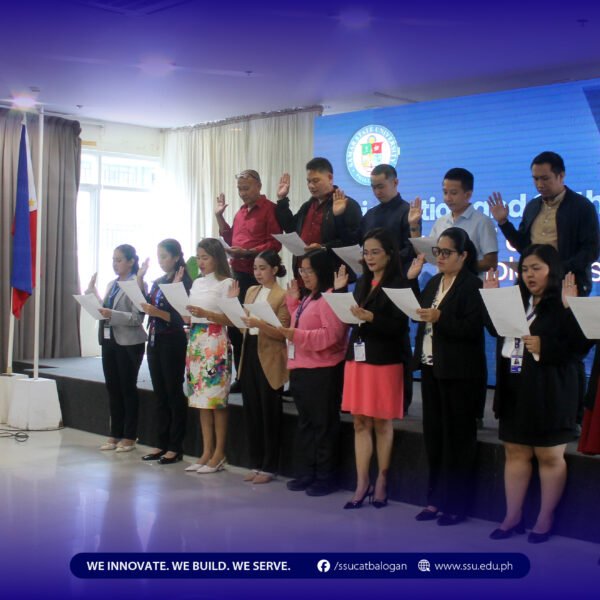Bachelor of Science in Civil Engineering
Program Description
Bachelor of Science in Civil Engineering
Electrical Engineering is a profession that involves the conceptualization, development, design and application of safe, healthy, ethical, economical and sustainable generation, transmission, distribution and utilization of electrical energy for the benefit of society and the environment through the knowledge of mathematics, physical sciences, information technology and other allied sciences, gained by study, research and practice.

Program Educational Objectives
Program Educational Objectives (coded as PEO1 to PEO7) for the graduates of the B.S. in Civil Engineering program shall be able to:
PEO1
Prepare for the planning, designing, constructing, managing, and maintaining of (a) railways, roads, and bridges; (b) dam’s reservoirs and hydraulic structures and systems; (c) water and wastewater disposal; (d) buildings and foundations; and (e) other types of civil works used by man;
PEO2
Take cognizance if their environment;
PEO3
Gain knowledge of their professional responsibilities;
PEO4
Gain knowledge on human, financial, physical and resource management;
PEO5
Utilize their knowledge of arts, science, and engineering concepts;
PEO6
Prepare for the graduate tasks, researches and extension: services;
PEO7
Discharge all the duties and responsibilities inherent to SSU Alumni Association.
program Outcomes
The current graduate outcomes (coded as GO1 to GO17) for the B.S. in Civil Engineering include:
| No. | Description |
|---|---|
| PO1 | Articulate and discuss the latest developments in the specific field of practice. |
| PO2 | Communicate effectively in writing, speaking, and presenting using culturally appropriate language. |
| PO3 | Work effectively in teams, in collaboration with other disciplines, and multicultural teams. |
| PO4 | Practice the profession in accordance with existing laws, social, moral, and/or ethical responsibility. |
| PO5 | Act as a responsible citizen and show pride in being Filipino by preserving and promoting Filipino historical and cultural heritage. |
| PO6 | Demonstrate competence to conduct research. |
| PO7 | Demonstrate competence and commitment to develop appropriate technological services in response to national, regional, and local development. |
| PO8 | Demonstrate the ability to use innovative, creative, and appropriate methods to meet the demands of the industry and/or labor market. |
| PO9 | Demonstrate the ability to sustainably manage the resources available in the community. |
| PO10 | Demonstrate the ability to create scientific solutions and innovative concepts with creativity and critical-mindedness. |
| PO11 | Demonstrate competence to translate challenges into opportunities. |
| PO12 | Demonstrate the ability to engage in lifelong learning with a passion to keep current with local, national, and global developments. |
| PO13 | Apply knowledge of mathematics and science to solve complex civil engineering problems. |
| PO14 | Apply techniques, skills, and modern engineering tools for engineering practice. |
| PO15 | Demonstrate the ability to provide engineering solutions in a global/societal context to alleviate the socio-economic status of the community. |
| PO16 | Design a system, component, or process to meet desired needs within realistic constraints such as economic, environmental, social, political, ethical, health and safety, manufacturability, and sustainability in accordance with standards. |
| PO17 | Demonstrate and apply civil engineering and management principles as a member and/or leader in a team to manage projects in multidisciplinary environments. |
Program Faculty

Curriculum
BSCE Semestral Program of Study
Summer Term
[dynamic_table headers=”Course Code|Course Description|Lecture Units|Laboratory/RLE Units|Total Hrs./Week|Total Units|Pre-Requisite|Co-Requisite” rows=”PREP|College Algebra|4|0|4|4|Non-STEM Track/Strand Mandatory|STEM Strand Optional;Total||4|0|4|4||”]
First Semester
[dynamic_table headers=”Course Code|Course Description|Lecture Units|Laboratory/RLE Units|Total Hrs./Week|Total Units|Pre-Requisite|Co-Requisite” rows=”GE 10|Science, Technology, and Society|3|0|3|3|Bridging Program (Non-STEM)|;GE 3|Mathematics in Modern World|3|0|3|3|Bridging Program (Non-STEM)|;Math 1|Calculus 1|4|0|4|4|Bridging Program (Non-STEM)|;Chem 1|Chemistry for Engineers|3|1|4|4|Bridging Program (Non-STEM)|;ES 5|Civil Engineering Orientation|2|0|2|2|Bridging Program (Non-STEM)|;ES 6|Engineering Drawings and Plans|0|1|1|1|Bridging Program (Non-STEM)|;ES 7|Computer Fundamentals and Programming|0|6|6|2|Bridging Program (Non-STEM)|;GE 5|Kontekstwalisadong Komunikasyon sa Filipino (KOMFIL)|3|0|3|3|Bridging Program (Non-STEM)|;PE 1|Physical Fitness, Health, and Wellness|2|0|2|2|Bridging Program (Non-STEM)|;NSTP 1|NSTP 1|3|0|3|3|Bridging Program (Non-STEM)|;Total|||23|12|27||”]
Second Semester
[dynamic_table headers=”Course Code|Course Description|Lecture Units|Laboratory/RLE Units|Total Hrs./Week|Total Units|Pre-Requisite|Co-Requisite” rows=”Math 2|Calculus 2|4|0|4|4|Math 1|;Math 3|Engineering Data Analysis|3|0|3|3|Math 1|;Phys 1|Physics for Engineers – Calculus Based|3|1|6|4|Math 1|;ES 1|Computer-Aided Drafting|1|1|4|2|ES 6|;ES 2|Engineering Economics|3|0|3|3|ES 5|;Geo 1|Geology for Engineers|3|0|3|3|Chem 1|;GE 8|Gender and Society|3|0|3|3|GE 5|;PE 2|Games and Sports|2|0|2|2|PE 1|;NSTP 2|NSTP 2|3|0|3|3|NSTP 1|;Total|||25|6|27||”]
First Semester
[dynamic_table headers=”Course Code|Course Description|Lecture Units|Laboratory/RLE Units|Total Hrs./Week|Total Units|Pre-Requisite|Co-Requisite” rows=”Math 4|Differential Equations|3|0|3|3|Math 2|;ES 8|Statics of Rigid Bodies|5|0|5|5|Math 2, Phys 1|;CE 1|Fundamentals of Surveying|3|1|6|4|Math 2, ES 6|;CE 2|Hydrology|3|0|3|3|Geo 1|;CE 6|Methods of Research|2|0|2|2|Math 3|;EU 1|Engineering Utilities 1 (Electrical)|3|0|3|3|Phys 1|;EU 2|Engineering Utilities 2 (Mechanical)|3|0|3|3|Phys 1|;GE 9|Reading Visual Art|3|0|3|3|GE 8|;PE 3|Fundamentals of Dances and Rhythmic Activities|2|0|2|2|PE 2|;Total|||27|3|28||”]
Second Semester
[dynamic_table headers=”Course Code|Course Description|Lecture Units|Laboratory/RLE Units|Total Hrs./Week|Total Units|Pre-Requisite|Co-Requisite” rows=”Math 5|Numerical Solutions to CE Problems|2|1|5|3|Math 4|;ES 9|Dynamics of Rigid Bodies|3|0|3|3|ES 8|;ES 10|Mechanics of Deformable Bodies|4|0|4|4|ES 8|;CE 3|Construction Materials & Testing|2|1|5|3|ES 8|;CE 4|Highway and Railroad Eng’g|3|0|3|3|CE 1|;CE 5|CE Law, Ethics, and Contracts|3|0|3|3|CE 2|;CE 7|Construction Methods and Project Mgt.|3|0|3|3|EU 1, EU 2|;CE 8|Building System Design|2|1|5|3|ES 1|;PE 4|Martial Arts|2|0|2|2|PE 3|;Total||24|3|36|27||”]
First Semester
[dynamic_table headers=”Course Code|Course Description|Lecture Units|Laboratory/RLE Units|Total Hrs./Week|Total Units|Pre-Requisite|Co-Requisite” rows=”CE 9|Structural Theory|3|2|9|5|ES 9, ES 10|;CE 10|Quantity Surveying|1|1|4|2|CE 8|;CE 11|Principles of Transportation Engineering|3|0|3|3|CE 4|;CES 1|Prof Course-Specialized 1|3|0|3|3|Math 5|;CES 2|Prof Course-Specialized 2|3|0|3|3|Math 5|;CES 3|Prof Course-Specialized 3|3|0|3|3|Math 5|;CE 12|Geotechnical Eng’g 1 (Soil Mechanics)|3|1|6|4|Geo 1, ES 10|;Total||19|4|31|23||”]
Second Semester
[dynamic_table headers=”Course Code|Course Description|Lecture Units|Laboratory/RLE Units|Total Hrs./Week|Total Units|Pre-Requisite|Co-Requisite” rows=”|Principles of Steel Design|2|1|5|3|CE 9|;|Principles of Reinforced Concrete/Pre-stressed|3|2|9|5|CE 9|;|Geotechnical Eng’g 2 (Foundation Engineering)|3|0|3|3|CE 12|;|Prof Course-Specialized 4|3|0|3|3|CES 1, CES 2, CES 3|;|Prof Course-Specialized 5|3|0|3|3|CES 1, CES 2, CES 3|;|Hydraulics|4|1|7|5|CE 12|;|Living in the IT Era|3|0|3|3|GE 9|;Total||21|4|33|25||”]
Summer Term
[dynamic_table headers=”Course Code|Course Description|Lecture Units|Laboratory/RLE Units|Total Hrs./Week|Total Units|Pre-Requisite|Co-Requisite” rows=”OJT|On-the-Job Training – 240 Hours|0|4|240|4|Passed 100% of all major courses|”]
First Semester
[dynamic_table headers=”Course Code|Course Description|Lecture Units|Laboratory/RLE Units|Total Hrs./Week|Total Units|Pre-Requisite|Co-Requisite” rows=”EAC 1|CE Assessment Course 1|4|0|4|4|OJT|;EAC 2|CE Assessment Course 2|4|0|4|4|OJT|;CE 17|CE Project 1|1|1|4|2|CE 6, 4th Yr. Standing|;GE 12|The Life and Works of Rizal|3|0|3|3|4th Yr. Standing|;GE 4|Purposive Communication|3|0|3|3|4th Yr. Standing|;GE 6|Art Appreciation|3|0|3|3|4th Yr. Standing|;GE 11|Ethics|3|0|3|3|4th Yr. Standing|;ES 4|Engineering Management|2|0|2|2|4th Yr. Standing|;Total||23|3|24|24||”]
Second Semester
[dynamic_table headers=”Course Code|Course Description|Lecture Units|Laboratory/RLE Units|Total Hrs./Week|Total Units|Pre-Requisite|Co-Requisite” rows=”EAC 3|CE Assessment Course 3|4|0|4|4|EAC 1, EAC 2|;CE 18|CE Project 2|1|1|4|2|CE 17|;ES 11|Environmental and Energy Engineering|3|0|3|3|4th Yr. Standing|;GE 1|Understanding the Self|3|0|3|3|4th Yr. Standing|;GE 2|Readings in Philippine History|3|0|3|3|4th Yr. Standing|;GE 7|The Contemporary World|3|0|3|3|4th Yr. Standing|;ES 3|Technopreneurship 101|3|0|3|3|4th Yr. Standing|;Total||20|3|21|21||”]
BSCE Curriculum Checklist 2019
CHED MEMORANDUM ORDER NO. 92 s2017
POLICIES, STANDARDS AND GUIDELINES FOR THE BACHELOR OF SCIENCE IN CIVIL ENGINEERING (BSCE) PROGRAM EFFECTIVE ACADEMIC YEAR (AY) 2018-2019
Student Organization

Philippine Institute of Civil Engineers
The Philippine Institute of Civil Engineers (PICE) is a professional organization for civil engineers in the Philippines. It was formed by merging two earlier organizations: the Philippine Society of Civil Engineers (PSCE) and the Philippine Association of Civil Engineers (PACE). PICE aims to advance the knowledge and practice of civil engineering, improve civil engineering education, stimulate research, and maintain high ethical standards in the profession.
Achievements & Awards
News & Updates
College of Engineering Holds Stakeholders’ Consultation on Bachelor of Science in Electrical Engineering (BSEE) Syllabus Development
𝐂𝐨𝐥𝐥𝐞𝐠𝐞 𝐨𝐟 𝐄𝐧𝐠𝐢𝐧𝐞𝐞𝐫𝐢𝐧𝐠 𝐇𝐨𝐥𝐝𝐬 𝐒𝐭𝐚𝐤𝐞𝐡𝐨𝐥𝐝𝐞𝐫𝐬’ 𝐂𝐨𝐧𝐬𝐮𝐥𝐭𝐚𝐭𝐢𝐨𝐧 𝐨𝐧 𝐁𝐚𝐜𝐡𝐞𝐥𝐨𝐫 𝐨𝐟 𝐒𝐜𝐢𝐞𝐧𝐜𝐞 𝐢𝐧 𝐄𝐥𝐞𝐜𝐭𝐫𝐢𝐜𝐚𝐥 𝐄𝐧𝐠𝐢𝐧𝐞𝐞𝐫𝐢𝐧𝐠 (𝐁𝐒𝐄𝐄) 𝐒𝐲𝐥𝐥𝐚𝐛𝐮𝐬 𝐃𝐞𝐯𝐞𝐥𝐨𝐩𝐦𝐞𝐧𝐭𝐎𝐜𝐭𝐨𝐛𝐞𝐫 𝟐𝟐, 𝟐𝟎𝟐𝟓 | 𝐯𝐢𝐚…



